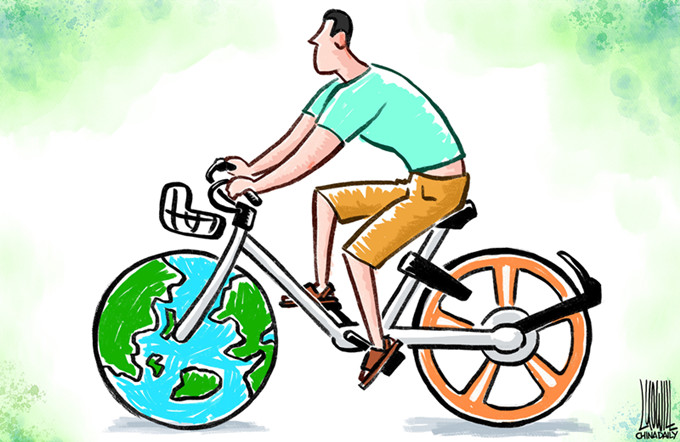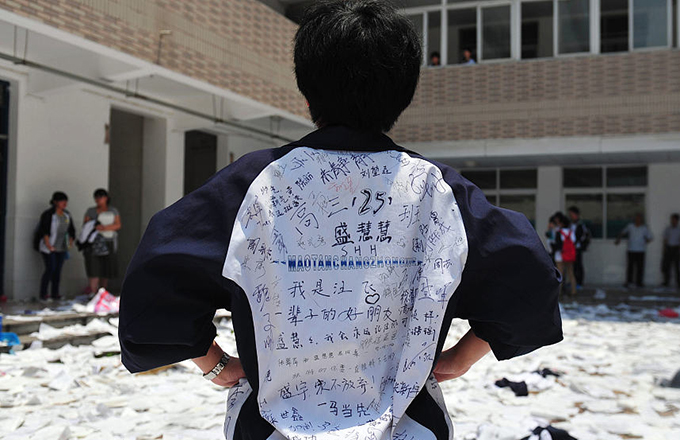Moving mountains: overcoming geography on the Belt and Road
The vision of China’s Belt and Road Initiative, the most ambitious economic project in human history, was first laid out by Xi Jinping in September 2013. The initiative will fuel economic development in over 60 countries through increasing connectivity and boosting trade. Despite the incredible advances in technology and manifold processes of globalisation that have taken place over the last few decades, connecting disparate parts of the world remains an enormous challenge. Geography still matters. Deserts, mountain ranges, oceans and inhospitable climates stand in the way, but China and its partners are making Herculean efforts to overcome geography and make the Belt and Road work for the world.
Fifty years ago, stoic Pakistani and Chinese labourers risked their lives in unforgiving conditions high up in the Karakoram Mountains, which delineate the border between their two nations,to build the Karakoram Highway, one of the highest paved roads in the world. The completion of this highway in the heavens achieved what was previously thought impossible by carving a route through the treacherous terrain. Half a century later, China and Pakistan are once again combining their knowledge and capabilities to mirror that extraordinary effort. The China-Pakistan Economic Corridor (CPEC) became partially operational in November last year when Chinese cargo was, for the first time, transported overland through Pakistan and onto the 21st Century Maritime Silk Road towards foreign shores. One leg of that cargo’s journey was the Karakoram Highway,currently under reconstruction, a key part of CPEC. The 887-kilometre-long section to be reconstructed extends from the China-Pakistan border to the historic town of Hasan Abdal, where legendary Chinese traveller Xuanzang visited the sacred spring of Elapatra in the seventh century A.D.
The first section of the highway, from the Chinese border to Raikot, was severely damaged by an earthquake on January 4 2010, causing landslides which dammed the Humza River and formed Attabad Lake, severely flooding the highway.That wasn’t a one-off; the geology of the region is highly unstable, as the area is home to several tectonic fault lines. Additionally, the Khunjerab Pass into Pakistan is blocked by snow during the winter. Despite the incredibly difficult conditions, most repairs to this section of road were completed in late 2012. The China-Pakistan Friendship Tunnels that have been built along this section to protect the highway stand as testament to what the Belt and Road Initiative can achieve. The full force of nature and geography at it most perilous are being overcome in the name of development.
Thousands of kilometres away, in the humid climes of south China, change is afoot at the Mohan-Boten gate on the China-Laos border. Just ten years ago, this patch of land where the border post now stands was dense tropical rainforest; one of the most underdeveloped parts of the country. Now, cooperation between the two countries is developing under the Belt and Road Initiative, most notably through the construction of the China-Laos Railway, which aims to connect Kunming, the capital of Yunnan province, with the Lao capital Vientiane.One of the stops will be at the town of Boten, on the Lao side of the border. Discussing the China-Laos Railway Vice President of the Laos-China Cooperation Committee VichitSindavong told Xinhua News Agency in an April 2017 interview,
"This is the biggest cooperation project between Laos and China, which will help Laos realize the target of turning from a land-locked into a land-linked country."
The Belt and Road Initiative can indeed help Laosachieve that goal but it won’t be easy. Construction of the railway officially began on December 25, 2016. Of the 414 kilometres of railway to be built, 62.7% of the length will be tunnels and bridges. That incredible statistic illustrate show demanding the terrain through which the railway is to be built is. Moreover, the Chinese companies building the railway have to take full advantage of the Lao dry season by working as quickly as possible while the weather lasts. The arrival of the wet season, which usually lasts from May until late September, poses risks such as sudden, deadly landslides. Laos has the potential to become a transport hub connecting Southeast Asia with China. With concerted efforts from all sides, the Belt and Road Initiative can help Laos turn geographical disadvantages into advantages.
Ever since the first travelling parties painstakingly crossed the deserts of the old Silk Road on camelback, mouths dry with thirst and heads bowed in exhaustion, distance has been an unavoidable geographical obstacle to trade between East and West. Trade is of course less of a daunting challenge in the twenty-first century, but for all the talk of ‘the world getting smaller’, transporting people and goods from one part of the globe to another still poses a huge logistical, financial and environmental challenge today. Until now, prevailing logic has suggested the best way to transport goods from China to the world and vice versa was by sea or air, so as to avoid the seemingly insurmountable difficulties of the land route. That is why eyebrows were raised when the Yiwu-London railway first made headlines. Nonetheless, the longest railway freight route in the world, covering roughly 12,000 kilometres, opened on 1st January 2017, making the UK the most western point of China’s Belt and Road Initiative. The train takes 18 days to complete a one-way trip, is cheaper than air freight and quicker than shipping. The Belt and Road Initiative is pushing the limits of human endeavour further than they have ever gone before.
Whether it is workers digging tunnels at high-altitude in the rugged landscape of the Karakoram Mountains, or engineers devising a route through the dense Lao rainforest, people along the Belt and Road are battling everything the planet throws at them in order to achieve the goals of enhancing trade and boosting development. It has been said that the Belt and Road is not a solo by China, but a symphony of all the countries involved. That rings true with regards to the geographical challenges that lie in the way of progress; it will take cooperation and a deep mutual understanding between different cultures in order to make it work. With China’s experience of moving mountains to achieve its own incredible development outcomes and the indomitable will of developing countries striving for progress, the Belt and Road Initiative appears to have a bright future ahead of it.
























